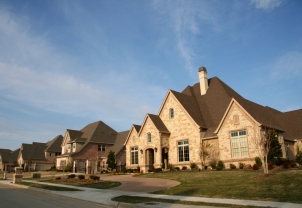
Homebuyers Can Afford More Expensive Homes, Says NAHB
By Stevie Duffin Updated on 4/2/2013By Daniel Duffield
The National Association of Home Builders (NAHB) is asserting to home buyers that they have the means to afford larger home purchases, citing U.S. Census Bureau data and statistics from the Department of Housing and Urban Development (HUD).
The NAHB recently discerned that those searching for a suitable home purchase can actually afford a larger, newer home while maintaining the same annual costs of upkeep as an older, existing property.
According to NAHB Chairman Rick Judson, home buyers need to consider the cost of maintaining a home beyond the actual initial purchase when determining whether to purchase a newly constructed home or an existing property.
A study conducted by the NAHB studied the costs of utilities, maintenance, property tax, and insurance depending on the age of the home. The results showed that homes constructed prior to 1960 would include an average cost of $564 annually in maintenance and upkeep, while homes build after 2008 average a considerably lower $241 per year.
In addition, the operating costs of a home constitute roughly 5% of the home’s value for home built before 1960, while such costs average less than 3% for homes built after 2008.
Judson further noted that borrowers will discover that older homes carry more expensive operating costs, while newer homes may be more affordable and can fit their budget.
Another NAHB study measured the first year costs of homeownership, excluding tax costs, taking into account purchase price, monthly mortgage payments, annual maintenance costs, and income tax savings. This study determined that buyers can afford to purchase a home for approximately 23% more than a home built prior to 1960 while maintaining the same costs for the first year of homeownership.
These findings mirror an earlier prediction by LPS that home prices could rise as high as 35% without adversely affecting housing affordability.
While monthly mortgage payments would be more expensive in a higher-priced home, the lessened operating costs translate to the same annual costs with a lesser-priced, older home that includes a less expensive monthly mortgage payment but higher maintenance costs.

Didn't find the answer you wanted? Ask one of your own.
-
 What You Need To Know About Escrow
View More
What You Need To Know About Escrow
View More
-
 President Obama Initiates Lower FHA Mortgage Insurance Premiums
View More
President Obama Initiates Lower FHA Mortgage Insurance Premiums
View More
-
 What is Quantitative Easing?
View More
What is Quantitative Easing?
View More
-
 The 5 New Mortgage and Housing Trends for Summer 2013
View More
The 5 New Mortgage and Housing Trends for Summer 2013
View More
-
 Fannie Mae profitability skyrockets
View More
Fannie Mae profitability skyrockets
View More
-
 Foreclosure protections for more soldiers after lawmakers draft bill
View More
Foreclosure protections for more soldiers after lawmakers draft bill
View More
-
 FHFA: HARP success follows low mortgage rates, February refinance volume strong
View More
FHFA: HARP success follows low mortgage rates, February refinance volume strong
View More
-
 Use of Mortgage Interest Deduction Depends on Where You Live
View More
Use of Mortgage Interest Deduction Depends on Where You Live
View More
-
 HUD will sell 40,000 distressed loans in 2013
View More
HUD will sell 40,000 distressed loans in 2013
View More
-
 Mortgage Principal Reduction Could Save Taxpayers $2.8 Billion
View More
Mortgage Principal Reduction Could Save Taxpayers $2.8 Billion
View More
-
 Mortgage Applications Regain Traction after Sluggishness, Rates Continue to Fall
View More
Mortgage Applications Regain Traction after Sluggishness, Rates Continue to Fall
View More
-
 HARP 3.0 Discussions Reveal Little Hope for HARP Update
View More
HARP 3.0 Discussions Reveal Little Hope for HARP Update
View More
-
 Home Prices Rise in February According to LPS Data
View More
Home Prices Rise in February According to LPS Data
View More
-
 Balancing Act: House Committee Hears Opposing Viewpoints Over Mortgage Interest Rate Deduction
View More
Balancing Act: House Committee Hears Opposing Viewpoints Over Mortgage Interest Rate Deduction
View More
-
 Near Record Low Mortgage Rates Buoy Housing Recovery
View More
Near Record Low Mortgage Rates Buoy Housing Recovery
View More
Related Articles
Ask our community a question.
Searching Today's Rates...

Featured Lenders
Lisa Stepp
RBS Citizens
Clifton Park, NY

